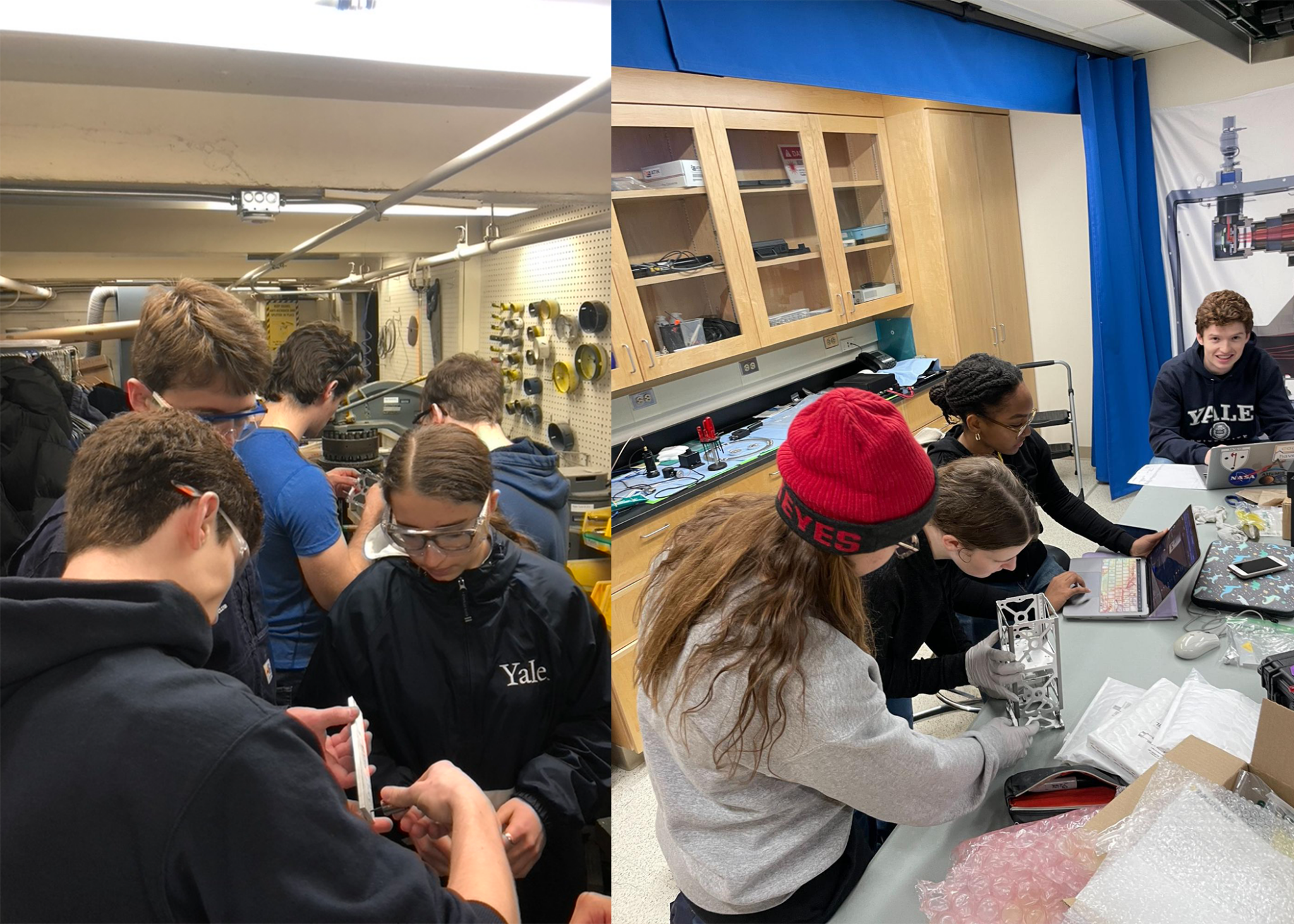Yale CubeSat team develops satellite to be launched into orbit
The small cosmic ray-detecting satellite will be deployed from the International Space Station in winter of 2023.

Maria Korolik, Contributing Photographer
For the past several years, Yale students in the Yale Undergraduate Aerospace Association have been hard at work building a satellite to be launched by NASA this winter.
In 2018, the YUAA was awarded a grant from NASA’s CubeSat Launch initiative. The group formed the CubeSat team to create a 2U — or 20 centimeters x 10 centimeters x 10 centimeters — satellite, named the Bouchet Low Earth Alpha-Beta Space Telescope, or BLAST. After seven years of development, BLAST is scheduled to launch this winter on a NASA mission and will be deployed from the International Space Station.
“I feel very lucky as an undergraduate to be able to work on flight hardware and software that will be launched into space and remain in orbit for several years,” said co-project lead Grady Morrissey ’24.
The satellite is designed to measure cosmic rays in low Earth orbit before the rays enter Earth’s atmosphere. Cosmic rays are high-energy streams of particles radiating from space, usually from outside the solar system. When they reach Earth’s atmospheres, they decay into lower-energy particles.
Detecting and identifying such rays is an extremely relevant and ongoing area of research with ramifications for cosmology and particle theory, according to Morrissey. The BLAST CubeSat will measure the energy and flux of these cosmic rays and make the data available online to the public.
Morrissey noted that two of the key subsystems in the satellite are entirely designed and manufactured by students: the cosmic ray detector and the gravity gradient boom — the system that allows the satellite to maintain its orientation.
The gravity gradient boom consists of a tape measure controlled by a sprocket to change the center of mass of the satellite, inducing an effect called “tidal locking” which maintains the satellite orientation throughout its orbit.
“It’s been really cool to see how work is coordinated between each subteam, and to see the direct effects of design decisions as they are passed between each group,” said co-project lead Elijah Bakaleynik ’24.
Validating a satellite for the harsh environment of space happens in incremental steps, according to Morrissey. Last semester, the team “cold-tested” components of their satellite in Wright Lab.
There, the team brought the instrument down to -40 degrees Celsius and validated its functionality. This thermal testing, Morrissey noted, ensured that their satellite would perform well in the cold.
Morrissey highlighted how CubeSat has provided many undergraduate students with the novel opportunity to develop a product that will be launched into space — an experience directly applicable to myriad future careers in a wide range of industries — as well as allowing for the possibility of more advanced CubeSats launched by Yale in the future.
“The team meetings are the highlights of my week,” Computer-Aided Design and Mechanical Integration sub team lead Matilda Vary ’25 said. “The technical and leadership experiences I have gained on the mechanical team have helped me in classes and securing summer internships.”
The CubeSat team hopes their launch will benefit other teams and scientists, as well as contribute to making space more accessible. They plan to publish the design post-launch, as well as the data on their website to create a publicly accessible dataset available for research.
Moreover, the data collected by the detector will be transmitted regularly over radio, allowing amateur radio operators around the world to receive and analyze it.
The team also hopes to travel to Houston Flight Control to witness the launch of the BLAST CubeSat this winter and celebrate the successful culmination of nearly 8 years of work.
“This group has been an incredible opportunity for me to develop my own engineering skills, meet an amazing community of like-minded students and see what it is like to actually be an aerospace engineer,” Attitude Determination and Control Algorithm lead Henry Demarest ’25 said.
The CubeSat team meets on Saturdays 12 to 4 p.m. in Watson B-42.







